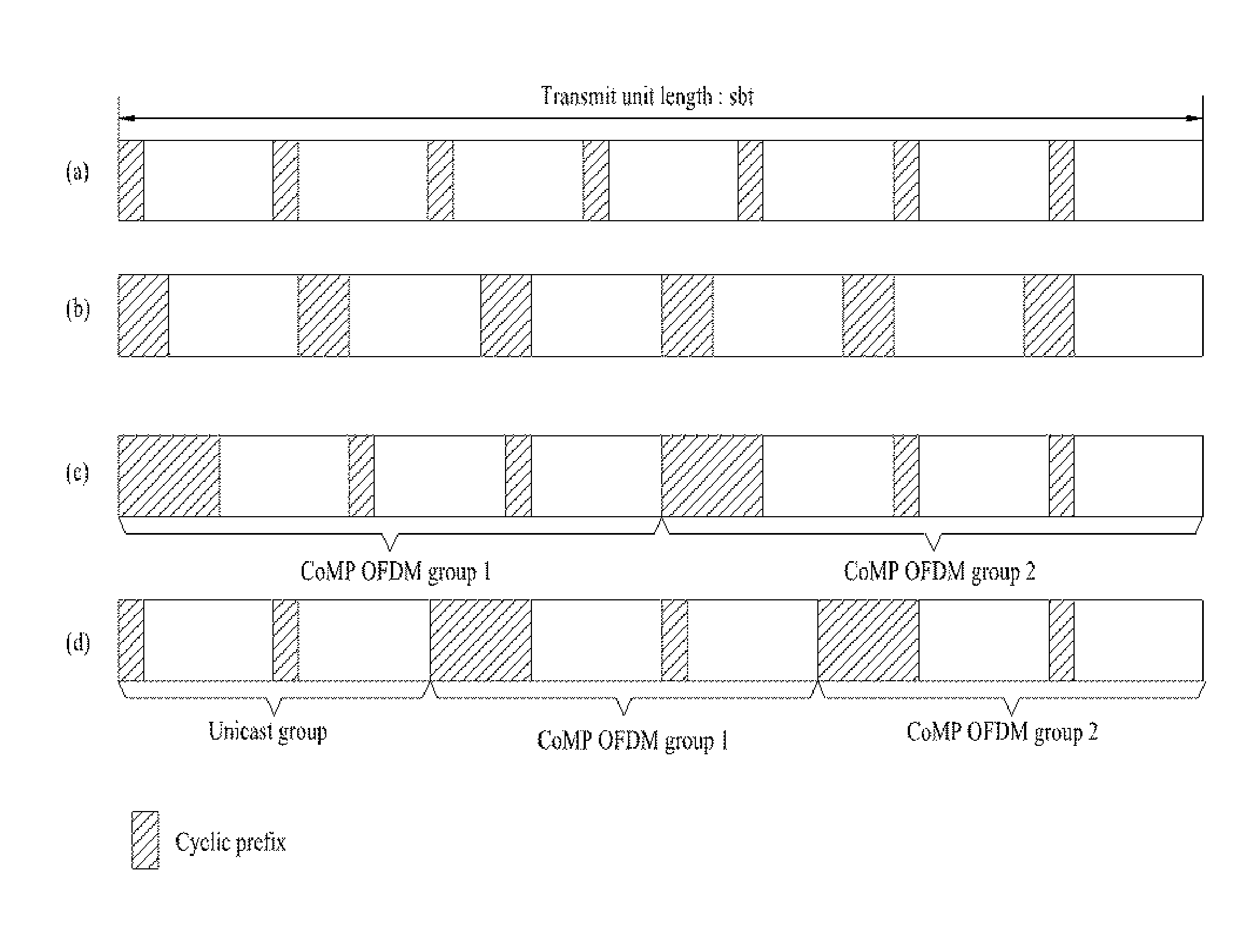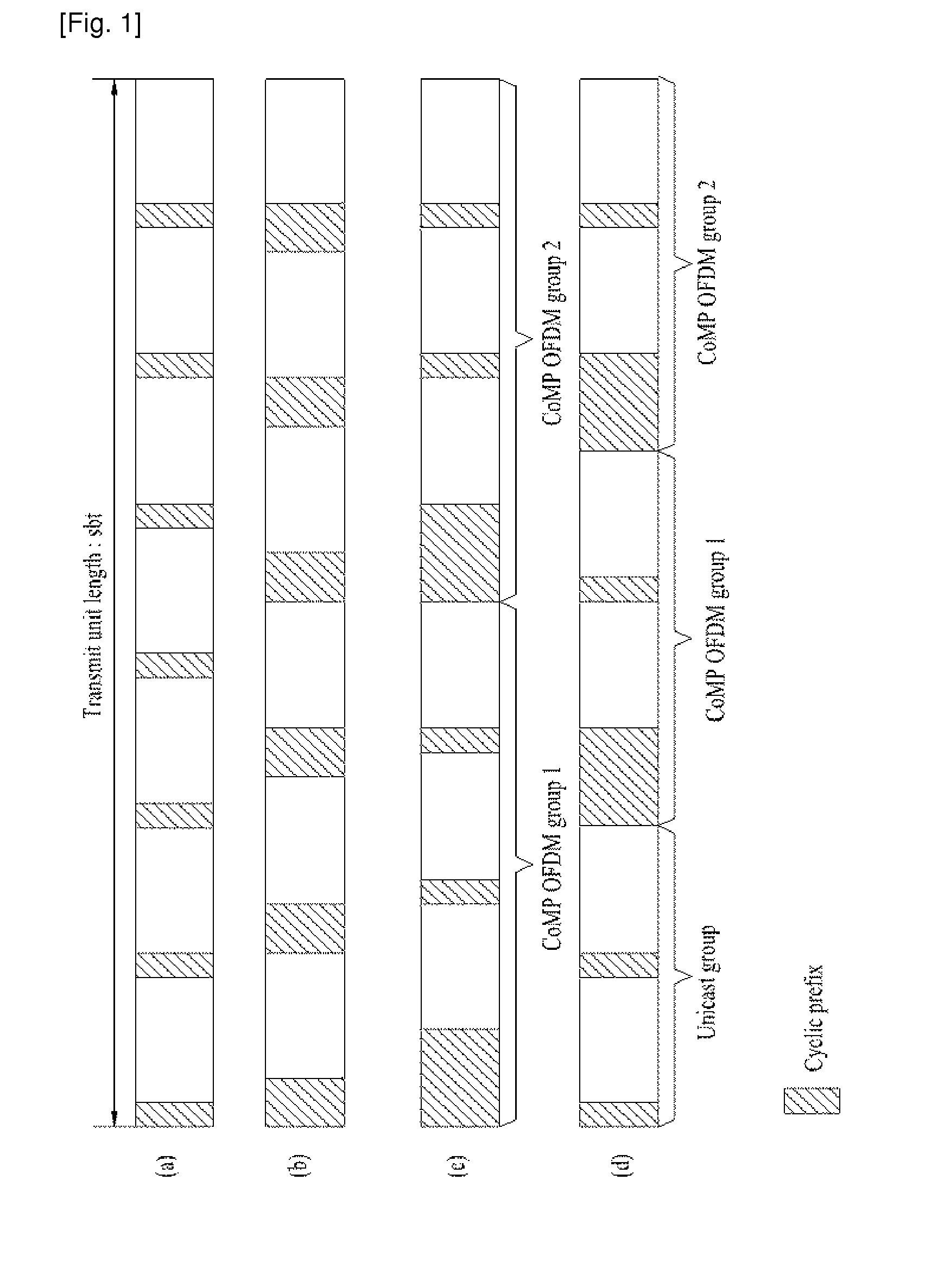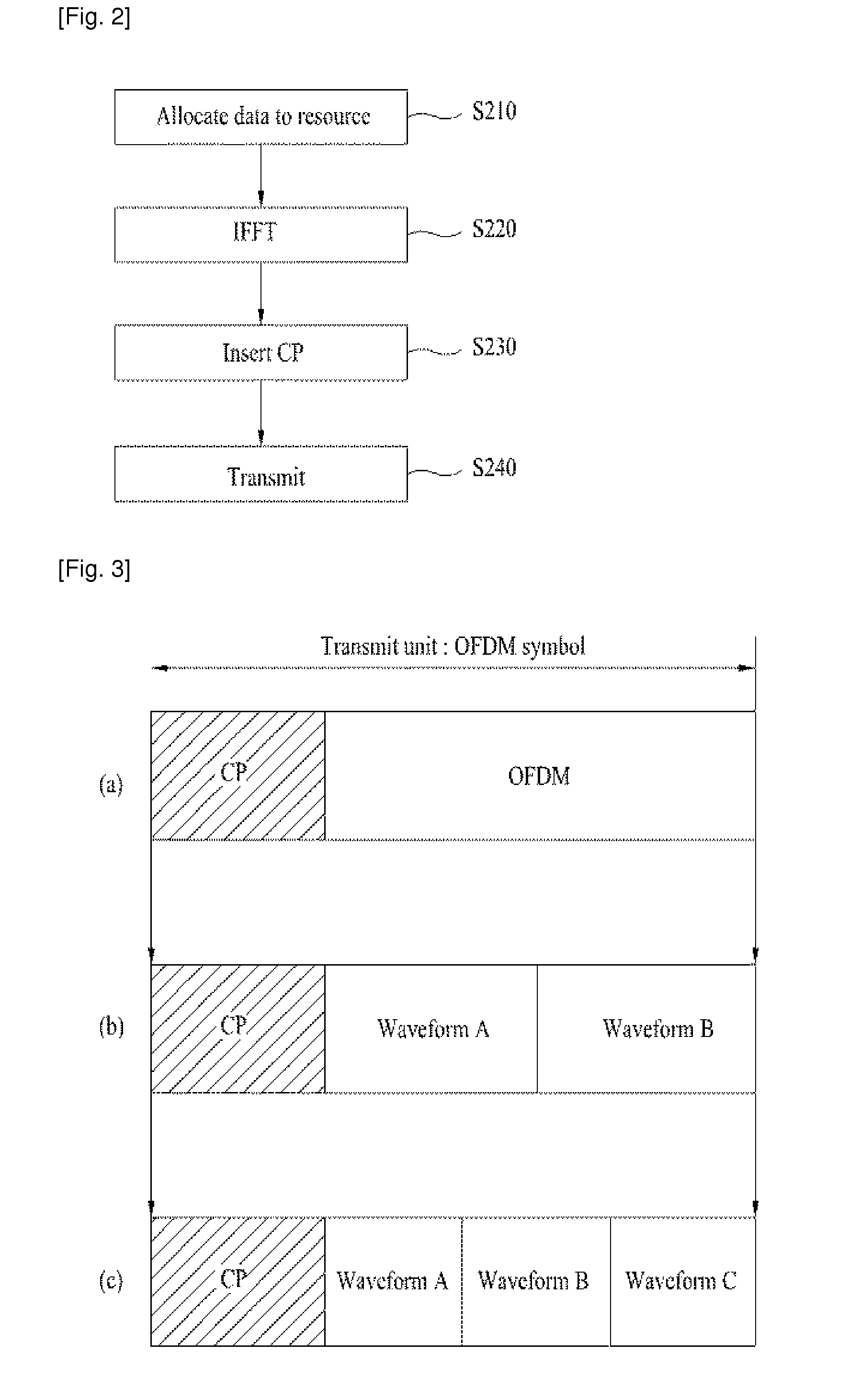Method of Transmitting and receiving Data in a Wireless System
a wireless communication and wireless technology, applied in the direction of synchronization arrangement, transmission path division, broadcast with distribution, etc., can solve the problems of inability to solve the delay differences of signals received from a plurality, difficult to implement comp (coordinated multi-point) schemes, and inability to synchronize signals received from multiple points
- Summary
- Abstract
- Description
- Claims
- Application Information
AI Technical Summary
Benefits of technology
Problems solved by technology
Method used
Image
Examples
first embodiment
[0037]A method of transmitting data according to the present invention is explained with reference to FIG. 1 as follows.
[0038]First of all, in a single cell environment, a CP length is set in consideration of a delay spread of signal only. In this case, the delay spread of signal is affected by a geographical environment of a cell. In a single cell environment, a CP is used to supplement a round trip delay and a multipath delay and performs timing advance using a random access channel (RACH), whereby a system can operate without problems. Yet, in a multi-cell environment, it is necessary to supplement a propagation delay of signal, i.e., a delay time taken for a signal containing significant energy therein to come in as well as the multipath delay.
[0039]According to a first embodiment of the present invention, a CP length is set longer than that of a single cell environment and is also set to supplement a maximum signal delay time of a system.
[0040]A plurality of cells in progress o...
second embodiment
[0054]In the following description, a method of transmitting data according to the present invention is explained with reference to FIG. 2 and FIG. 3.
[0055]According to a second embodiment of the present invention, a multiplexing method for bringing an effect of extending a CP length is used. According to a second embodiment of the present invention, a signal is rendered to repeatedly appear in a time domain to use a portion of the repeated signal as a cyclic prefix or a cyclic postfix.
[0056]FIG. 2 is a flowchart of a data transmitting method according to a second embodiment of the present invention.
[0057]Referring to FIG. 2, a base station allocates data, which will be transmitted, to a resource region [S210]. In doing so, the base station allocated the data to the resource region with an interval of at least two subcarriers. If the data to transmit is allocated on a frequency axis with 2-subcarrier interval, a corresponding OFDM symbol generates a waveform repeated twice on a time...
third embodiment
[0066]In the following description, a method of transmitting data according to the present invention is explained with reference to FIG. 4 and FIG. 5.
[0067]According to a third embodiment of the present invention, while a related art OFDM symbols structure is maintained, a process different from that of a resource for supporting a user equipment communicating with a single cell is applied to a resource for supporting CoMP.
[0068]FIG. 4 is a diagram for a data allocating process according to a third embodiment of the present invention.
[0069]Referring to FIG. 4, a base station arranges data in a single carrier transmission format in a time domain and then inserts a cyclic prefix and / or a cyclic postfix in front and / or rear of the data.
[0070]In doing so, after the cyclic prefix or the cyclic postfix has been inserted, if signals having different delay times are received, it is able to maintain orthogonality of a corresponding OFDM symbol. If both of the cyclic prefix and the cyclic post...
PUM
 Login to View More
Login to View More Abstract
Description
Claims
Application Information
 Login to View More
Login to View More - R&D
- Intellectual Property
- Life Sciences
- Materials
- Tech Scout
- Unparalleled Data Quality
- Higher Quality Content
- 60% Fewer Hallucinations
Browse by: Latest US Patents, China's latest patents, Technical Efficacy Thesaurus, Application Domain, Technology Topic, Popular Technical Reports.
© 2025 PatSnap. All rights reserved.Legal|Privacy policy|Modern Slavery Act Transparency Statement|Sitemap|About US| Contact US: help@patsnap.com



